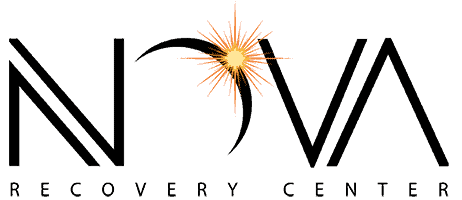Last Updated on October 22, 2025
Crack cocaine is a highly addictive stimulant known for its intense effects on the brain. According to the diagnostic and statistical manual, smoking crack-cocaine causes a rapid dopamine spike, making users feel good temporarily but increasing the risk of addiction. Common signs and symptoms include dilated pupils, chest pain, weight loss, and depression anxiety.
Crack use signs also include physical and behavioral changes. Long term effects may impact both health care needs and mental stability. Recognizing the effects of crack cocaine early and exploring treatment options through behavioral therapies and a treatment center is crucial for recovery.
What Is the Crack Drug? Signs, Dangers, and How to Seek Help
Crack cocaine, often known as rock, is one of the most addictive and dangerous substances available today. With its fast-acting high and powerful impact on the brain’s reward system, it can lead to intense psychological and physical harm. Many people battling crack addiction feel helpless—but recovery is possible with the right professional help. At Nova Recovery Center, we offer evidence-based treatments and compassionate care to support you on your path to sobriety.
In this article, we explore what crack cocaine is, how addiction takes hold, the dangers involved, and where to turn for help.
What Is Rock Drug?
Crack is a concentrated, smokable form of cocaine. They named it for the crackling sound it makes when heated. Unlike powder cocaine, which people snort or inject, most users smoke crack.
This method gives a quick, strong high that usually lasts 5 to 10 minutes. Users often want more to keep feeling good.
Crack is made by mixing cocaine with water and baking soda and heating the mixture until a rock-like substance forms. This freebase form of cocaine vaporizes easily, allowing it to reach the brain quickly and produce its signature rush.
The Addictive Power of Crack Cocaine
Crack cocaine’s intense effects on the brain make it extremely addictive. The drug causes a significant spike in dopamine, the brain’s “feel-good” chemical associated with pleasure and reward. The National Institute on Drug Abuse (NIDA) says that this rush of dopamine changes the brain’s chemistry. It also strengthens the urge to seek drugs compulsively.
Over time, users find that they need more crack—more frequently—to achieve the same high. Eventually, they may need it just to function normally, which forms the basis of of becoming physically and psychologically dependent.
In 2020, more than 1 million people in the U.S. said they used cocaine, including crack, in the past year. This information comes from the Substance Abuse and Mental Health Services Administration.
At Nova Recovery Center, we understand substance use disorder is a chronic disease. Our programs provide structure and support. They help people overcome crack addiction. This leads to better well-being.
Signs Someone is on Crack and Crack Addiction Signs
Recognizing the signs of crack cocaine use early can be the key to saving a life. Users might try to hide their addiction, but there are clear signs. These signs can be physical, emotional, or behavioral.
- Dilated pupils
- Burn marks on lips or fingers
- Sudden bursts of energy or manic behavior
- Paranoia and hallucinations
- Rapid mood swings or aggression
- Neglect of hygiene and responsibilities
- Dramatic weight loss
- Unexplained financial or legal issues
If you see these warning signs in yourself or someone you care about, know that professional addiction treatment is necessary. Crack addiction is powerful, but with support and therapy, recovery is possible.
Health Effects and Long-Term Damage of Crack Drug Use
The physical and mental effects of crack drug use are devastating. The longer someone uses, the more severe and potentially irreversible the health consequences become:
- Heart attacks and abnormal heart rhythms
- Respiratory failure and lung complications
- Elevated blood pressure leading to potential stroke
- Kidney and liver damage
- Severe dental decay, commonly called “crack mouth”
- Persistent anxiety, depression, or psychosis
Stat: Crack cocaine users are three times more likely to suffer a stroke compared to those who do not use the drug (Journal of the American Heart Association).
Many of these effects are treatable, especially with early intervention. At Nova Recovery Center, we offer comprehensive care to address both physical and mental health, placing clients on the path to full recovery.
Who Is Most at Risk?
While crack cocaine can affect anyone, certain populations are at higher risk. They include individuals with a personal or family history of substance abuse, untreated mental illness, or those who’ve experienced trauma. Others who may be at increased risk are:
- Young adults and teens
- People in high-stress, low-income environments
- Individuals with limited access to mental health or addiction support
Think of your brain as a finely tuned radio. Crack cocaine turns the volume up to the max, distorting the signal. Over time, it becomes difficult to “tune in” to normal functioning without help. The good news is that healing is possible. With targeted therapy and support, the brain can recover from the damage.
Nova Recovery Center’s professional staff helps individuals from all backgrounds rebuild their lives through medically supervised detox, residential treatment, and relapse prevention strategies tailored for long-term results.
Get Help for Crack Cocaine Addiction Today
If you or a loved one is struggling with crack cocaine addiction, don’t wait. Recovery is within reach. Through our full continuum of care, Nova Recovery Center empowers individuals to overcome addiction and regain control of their lives.
Take the first step today by contacting our team online via our secure contact form or calling us at (512)605-2955 to speak with one of our compassionate admissions coordinators. Help is just one click—or one call—away.


